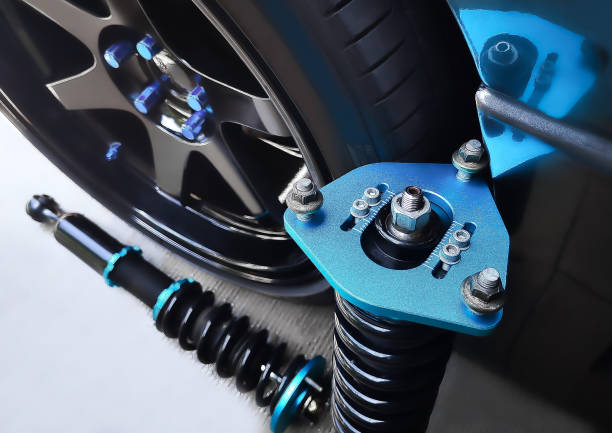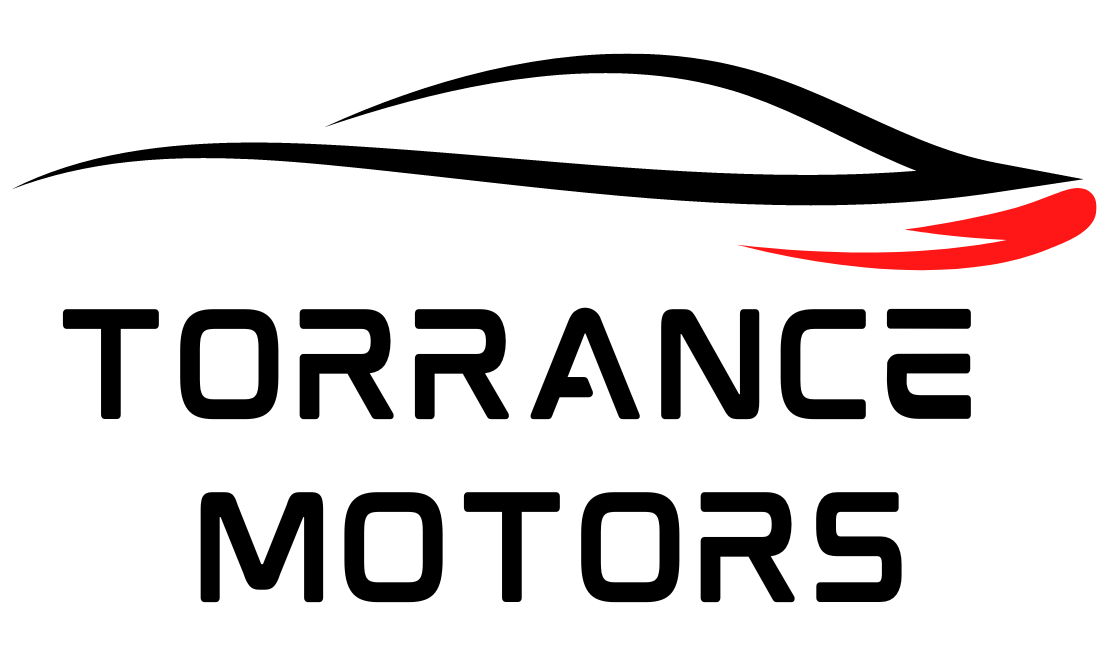
Why Is My Car Shaking When Braking?
Feeling your car shake or vibrate when you press the brake pedal can be unsettling. This problem often signals that something in your braking or suspension system isn’t working as it should. While some drivers assume it’s just uneven roads or minor wear, shaking during braking can point to serious safety issues. Understanding why your car shakes when braking helps you take timely action, ensuring both your comfort and your safety. Even if it’s a problem with your brake rotors, pads, tires, or suspension, a quick inspection can prevent costly repairs later. Let’s look at what these vibrations mean, what causes them, and how a certified mechanic at Torrance Motors can help you restore a smooth, confident ride.
What Does It Mean When Your Car Shakes While Braking?
When your car shakes during braking, it’s a warning that something in your braking or suspension system isn’t working properly. This vibration often points to issues like warped rotors, worn brake pads, or tire imbalance. It’s your car’s way of telling you that the brakes aren’t gripping evenly, which can reduce stopping power and safety. Getting this checked early prevents bigger, costlier problems down the road.
How Normal Braking Should Feel
In a healthy braking system, the process should feel smooth and steady. When you apply pressure to the brake pedal, your car should slow down evenly without any pulsing, shaking, or noise. The steering wheel and brake pedal should remain stable throughout the stop. Any vibration you feel through the pedal or wheel indicates an irregular friction surface or imbalance somewhere in your braking or wheel assembly. Brake components like rotors and pads are designed to work in perfect alignment; when they don’t, shaking begins. Understanding what “normal” feels like helps you notice early warning signs before a minor issue becomes dangerous.
What Vibration or Shaking Indicates About Your Vehicle’s Condition
Vibration while braking is your vehicle’s way of telling you something’s off. A light tremor at the steering wheel often points to front brake or rotor issues, while shaking in the seat or rear end usually signals rear brake or suspension problems. Sometimes, vibrations show up only at certain speeds, especially during highway driving or downhill braking, which can point to heat distortion or warped rotors. Persistent shaking should never be ignored because it affects your stopping distance and the vehicle’s overall control. Recognizing these signs early helps protect your safety and prevents damage to other brake components.
Why Ignoring Brake Vibrations Can Compromise Safety
Ignoring a shaking brake pedal is like skipping a doctor visit when you feel pain; the longer you wait, the worse it gets. Brake vibrations often mean parts are wearing unevenly, and delaying service can cause more heat, friction, and stress throughout your system. A warped rotor can quickly damage new brake pads, and a stuck caliper can lead to brake failure. The vibration also affects tire wear, steering response, and suspension health. Beyond safety, this neglect can lead to expensive repairs that could have been avoided with early attention from a qualified mechanic.
What Are the Most Common Causes of Car Shaking When Braking?
Several issues can cause your car to shake when you press the brake pedal. The most common are warped brake rotors, unevenly worn pads, or a sticking brake caliper. Other possibilities include unbalanced tires, misaligned wheels, or worn suspension parts. Each problem affects braking smoothness and control, so having a mechanic inspect your system helps find and fix the exact cause quickly.
Are Your Brake Rotors Warped or Uneven?
Warped or uneven rotors are among the top reasons for shaking while braking. Rotors can become warped from excessive heat caused by aggressive braking, worn pads, or cheap rotor materials. When the rotor surface becomes uneven, the brake pads can’t grip it evenly, causing a pulsing or vibrating sensation. In some cases, resurfacing the rotors can solve the problem, but if the damage is deep or the thickness is below safe limits, replacement is necessary. Regular inspections and proper torque on wheel lug nuts can prevent premature rotor warping.
Could Worn Brake Pads Be the Reason for the Vibration?
Brake pads are designed to wear evenly, but when they thin out or wear unevenly, they create inconsistent friction. This uneven contact leads to vibration and squealing noises. Low-quality pads can also leave residue on the rotor, worsening the shake. Common signs of worn brake pads include grinding sounds, longer stopping distances, and visible thinning through the caliper. Always use high-quality pads and have them replaced in pairs to maintain balance and braking efficiency.
Is a Sticking or Seized Brake Caliper Causing the Shudder?
A sticking brake caliper can cause serious vibration because it keeps one brake engaged even when you release the pedal. You might notice your car pulling to one side or a burning smell from the affected wheel. Calipers can stick due to corrosion, dirt buildup, or failed slide pins. If ignored, this can overheat the rotor and pad, leading to complete brake failure. Cleaning and lubricating the caliper pins or replacing damaged calipers is the best way to restore smooth braking and even wear.
Do Unbalanced or Damaged Tires Lead to Shaking?
Tires play a crucial role in braking stability. If they are unbalanced, worn unevenly, or damaged, they can cause your steering wheel or vehicle body to shake when you apply the brakes. You might feel stronger vibration at higher speeds. Tire imbalance puts stress on suspension parts and causes uneven rotor wear. Regular tire rotation, balancing, and checking for bald spots or sidewall damage help prevent this issue. Remember, even small tire irregularities can magnify during braking.
How Does Poor Wheel Alignment Affect Braking Stability?
Wheel alignment ensures that all tires meet the road evenly. When alignment is off, your tires don’t roll straight, putting uneven pressure on your suspension and brake system. Misalignment can cause vibrations that worsen during braking because your car’s weight shifts unevenly. You may also notice your steering wheel pulling slightly to one side. Getting an alignment check every 6 to 12 months, especially after hitting potholes or curbs, keeps your brakes and tires working together smoothly.
Can Worn Suspension or Steering Parts Create Brake Vibration?
Suspension and steering parts like ball joints, control arms, or tie rods absorb movement and maintain balance during braking. When they wear out, they allow excessive play, leading to shakes, clunks, and instability when stopping. The vibrations can feel like brake problems even though the issue lies in the suspension system. Mechanics often inspect these components alongside your brakes to ensure full safety. Replacing worn suspension parts not only fixes shaking but also improves handling and extends tire life.
How Mechanics Diagnose Vibration While Braking
Mechanics start by test-driving your car to feel the vibration firsthand. They then inspect the rotors, pads, and calipers for uneven wear or heat damage. Tire balance and alignment are also checked to rule out wheel-related causes. Using precision tools, they measure rotor thickness and inspect suspension components to pinpoint the problem. This step-by-step process ensures the right repair is made the first time.
What Tests Identify Brake Rotor or Pad Problems?
A professional mechanic starts with a visual inspection of the rotors and pads. They look for heat spots, grooves, uneven wear, or cracks. Next, they may use a micrometer to measure rotor thickness and check for warping. Test drives help confirm if the vibration occurs under specific conditions like high-speed braking or downhill stops. Sometimes, mechanics remove the wheels to spin the rotors manually and detect rough or uneven surfaces. This detailed testing ensures accurate diagnosis before replacing parts.
How Technicians Check for Tire or Wheel Imbalance
Technicians use balancing machines to detect uneven weight distribution in tires and wheels. These machines pinpoint where small weights should be added to restore balance. They also inspect tire tread for irregular patterns that suggest suspension or alignment issues. Test drives further confirm if the vibration is tire-related or brake-specific. Regular balancing helps maintain smooth braking and prolongs both tire and rotor life.
Why Suspension and Steering Inspection Is Important
Since suspension and steering components directly affect stability during braking, they are always checked during vibration diagnostics. Mechanics inspect shocks, struts, and joints for wear or looseness. Any worn part can amplify the shaking effect. Tightening or replacing these parts restores alignment and braking balance. Ignoring worn suspension can make even new brakes feel rough or unstable.
What a Professional Brake Inspection Includes
A full brake inspection covers rotors, pads, calipers, brake lines, and fluid. Mechanics measure pad thickness, rotor runout, and check for leaks or contamination in the hydraulic system. They also test drive the vehicle to observe how it behaves under different braking pressures. This comprehensive process ensures that every cause of vibration ,from tires to suspension, is identified and corrected. At Torrance Motors, every inspection ends with a clear report and honest repair recommendations to help you drive confidently again.
How to Fix a Car That Shakes When Braking
If your car shakes when you press the brake pedal, it’s a clear signal that something needs attention. The good news is that most of these problems can be fixed quickly when handled by a professional technician. The key is to diagnose the root cause, whether it’s the brakes, tires, or suspension, and apply the right solution before further damage occurs. Understanding which repairs are most effective helps you make smart decisions and keep your car running safely.
Should You Replace or Resurface Brake Rotors?
If your brake rotors are warped or uneven, resurfacing or replacing them can solve most vibration problems. Resurfacing involves smoothing the rotor surface to restore even contact with the brake pads. However, if the rotors are too thin or deeply grooved, replacement is the safer choice. Continuing to drive on damaged rotors can cause your brake pads to wear faster and reduce your stopping power. High-quality rotors also resist warping longer and improve brake response. A certified mechanic will measure rotor thickness, check for heat spots, and recommend the right fix to restore a smooth, confident stop.
When to Change Brake Pads for Better Stopping Power
Worn or uneven brake pads are another common cause of shaking. If your pads are thinner than 3 millimeters, or if you hear squealing or grinding noises, replacement is necessary. Using new, high-quality pads not only removes vibration but also improves braking precision. Ceramic pads, for example, generate less dust and heat, keeping your rotors cleaner for longer. Changing your pads before they completely wear down can also prevent rotor damage. Mechanics typically replace pads in pairs, front or rear, to keep braking performance balanced across all wheels.
How Tire Balancing and Alignment Solve Shaking Issues
Unbalanced tires or poor wheel alignment can create vibrations that feel like brake problems. When your tires aren’t balanced, one section carries more weight than another, leading to uneven wear and wobbling. This imbalance becomes most noticeable when braking at higher speeds. Alignment issues cause your car to pull to one side and add stress to both suspension and brakes. Having your tires balanced and wheels aligned ensures even contact with the road and smoother braking. Technicians use precision equipment to correct these issues, which also extends tire life and improves fuel efficiency.
What Preventive Maintenance Keeps Braking Smooth
Preventive care is the best way to avoid brake-related shaking. Simple steps like rotating your tires every 6,000 miles, checking brake fluid levels, and replacing pads before they wear out can make a big difference. Keeping an eye on rotor condition and getting annual brake inspections helps detect small problems before they grow. Regular suspension and alignment checks also reduce stress on brake components. At Torrance Motors, our technicians recommend a comprehensive inspection every time you come in for an oil change or tire service, ensuring your braking system stays in top shape.
What the Type of Shaking Can Tell You About the Problem
Not all vibrations are the same, and where or how you feel them can reveal the source of the issue. Paying attention to when the shaking occurs helps mechanics pinpoint whether it’s related to the brakes, tires, or suspension.
Car Shakes When Braking at High Speeds: What’s Wrong?
If your car vibrates mainly at highway speeds, the issue often lies in the front brake rotors. At high speeds, heat builds up quickly, causing warped or uneven surfaces that lead to pulsing in the brake pedal. Unbalanced tires or worn suspension parts can also amplify this vibration. It’s essential to have the rotors checked immediately, continuing to drive this way can reduce braking control and wear out components faster. Mechanics may recommend rotor resurfacing, tire balancing, or even suspension repair depending on the diagnosis.
Steering Wheel Vibrates When Braking: What Does It Mean?
A shaking steering wheel when braking is usually a sign that the front rotors or calipers are uneven. Since the steering system is directly connected to the front wheels, any imbalance or warped surface is felt instantly through your hands. Other possible causes include unbalanced front tires or loose suspension joints. Ignoring this issue can cause steering problems and uneven tire wear. Mechanics typically start by checking the front rotors, then inspect the suspension to ensure everything is tight and aligned.
Car Vibrates Only When Braking Downhill
If your car shakes only when braking downhill, your rotors might be overheating. Long downhill braking generates excess heat that can warp the rotors or glaze the brake pads. Over time, this creates an uneven surface, resulting in pulsing or vibration. In some cases, the calipers may also stick from excessive heat buildup. Using lower gears on descents and giving your brakes time to cool helps prevent this. A mechanic can resurface or replace the rotors and inspect the calipers to restore smooth operation.
Vehicle Shakes When Idling After Braking: Engine or Brake Issue?
If your car continues to shake even after coming to a stop, it might not be the brakes at all. Engine or transmission mounts, misfiring spark plugs, or a dirty throttle body can cause the entire vehicle to vibrate at idle. However, because braking affects engine load, these issues can seem brake-related. A qualified technician will check both the braking and engine systems to find the exact cause. Addressing the issue promptly ensures your car runs smoothly and safely at every stop.
When Should You Visit Torrance Motors for a Brake Inspection?
If you feel shaking, hear grinding, or notice a burning smell when braking, it’s time for an inspection. These symptoms suggest your brake components may be worn or misaligned. At Torrance Motors, we’ll perform a complete brake check to identify the issue and restore safe, smooth performance. Scheduling service early keeps your vehicle reliable and prevents small issues from becoming major repairs.
Signs It’s Time to Get Your Brakes Professionally Checked
If you notice any of the following, it’s time to visit Torrance Motors:
- Brake pedal shakes or pulses
- Grinding or squealing noises when stopping
- Car pulls to one side during braking
- Burning smell after driving
- Soft or spongy brake pedal feel
These are all warning signs that your brake components need attention. A quick inspection can help you avoid costly damage and ensure safe braking performance.
Why Delaying Brake Service Can Lead to Costly Damage
Postponing brake repairs can turn a small fix into a big expense. A warped rotor can quickly wear out new brake pads, while a stuck caliper can damage the rotor and wheel bearing. Overheating from worn parts can even lead to brake failure. The longer you wait, the more strain spreads across your braking and suspension systems. Taking care of these issues early at Torrance Motors ensures your vehicle remains safe, reliable, and cost-efficient to maintain.
How Torrance Motors Keeps Your Braking System Reliable
What Makes Our ASE-Certified Technicians Brake Experts
Our ASE-certified technicians have years of hands-on experience diagnosing and repairing brake systems. They undergo continuous training to stay current with the latest vehicle technologies. From advanced ABS systems to electric parking brakes, our team knows exactly how to service them safely and correctly. This expertise allows us to identify the true cause of vibrations quickly and repair your brakes with accuracy and care.
Do We Offer Warranty on Brake Repairs and Parts?
Yes. At Torrance Motors, we stand behind every repair. All our brake services come with a warranty on both labor and parts, giving you confidence that your investment is protected. We use high-quality components that meet or exceed manufacturer standards, ensuring lasting performance. If any issue arises after service, our team will recheck and fix it promptly.
How to Book a Brake Inspection at Torrance or San Pedro Shop
Booking your brake inspection is easy. You can schedule an appointment online through our website or call our service center directly. We offer flexible time slots, quick turnaround, and friendly service. Our shops in Torrance and San Pedro are equipped with modern tools and comfortable waiting areas. Whether you need a simple check or a full brake replacement, we make the process smooth and stress-free.
Conclusion: Stop the Shaking Before It Stops You
A shaking car is never something to ignore. From warped rotors to worn suspension, these vibrations are clear signs that your vehicle needs attention. Regular maintenance and prompt inspections ensure your brakes operate safely and prevent costly damage in the future. If your car shakes when braking, trust the professionals at Torrance Motors.
Book your brake inspection today. We proudly serve drivers in Torrance and San Pedro, ensuring every stop is smooth, controlled, and safe.


